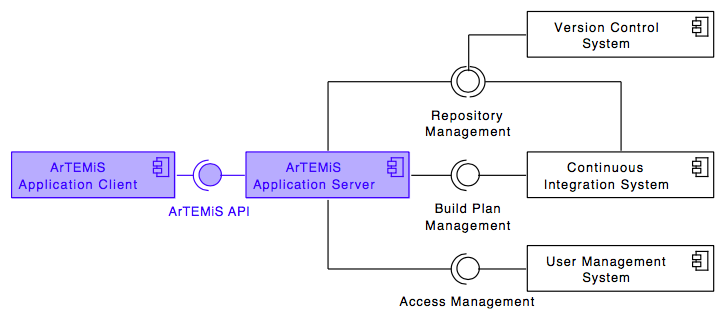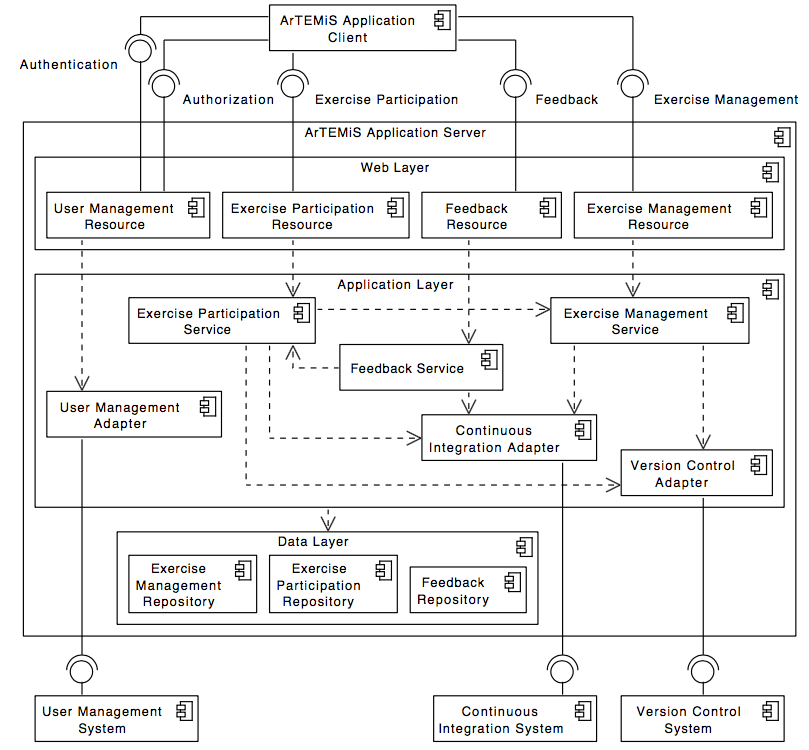System Design¶
Top-Level Design¶
The following diagram shows the top-level design of Artemis which is decomposed into an application client (running as Angular web app in the browser) and an application server (based on Spring Boot). For programming exercises, the application server connects to a version control system (VCS) and a continuous integration system (CIS). Authentication is handled by an external user management system (UMS).

Top-Level Design¶
While Artemis includes generic adapters to these three external systems with a defined protocol that can be instantiated to connect to any VCS, CIS or UMS, it also provides 3 concrete implementations for these adapters to connect to:
VCS: Atlassian Bitbucket Server
CIS: Atlassian Bamboo Server
UMS: Atlassian JIRA Server (more specifically Atlassian Crowd on the JIRA Server)
Deployment¶
The following UML deployment diagram shows a typical deployment of Artemis application server and application client. Student, Instructor and Teaching Assistant (TA) computers are all equipped equally with the Artemis application client being displayed in the browser.
The Continuous Integration Server typically delegates the build jobs to local build agents within the university infrastructure or to remote build agents, e.g. hosted in the Amazon Cloud (AWS).
Deployment Overview¶
Data Model¶
The Artemis application server used the following data model in the MySQL database. It supports multiple courses with multiple exercises. Each student in the participating student group can participate in the exercise by clicking the Start Exercise button. Then a repository and a build plan for the student (User) will be created and configured. The initialization state variable (Enum) helps to track the progress of this complex operation and allows to recover from errors. A student can submit multiple solutions by committing and pushing the source code changes to a given example code into the version control system or using the user interface. Each submission is automatically tested by the continuous integration server, which notifies the Artemis application server, when a new result exists. In addition, teaching assistants can assess student solutions and “manually” create results. The current data model is more complex and supports different types of exercises such as programming exercises, modeling exercises, quiz, and text exercises.
Data Model¶
